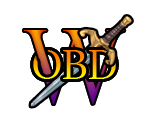
Army of the Dead
The term "undead" is used to refer to a type of creature in fiction characterized by being dead but still being able to exist and act in the material world. The term was coined by Bram Stoker in his novel Dracula, but there are many types of undead in fiction. Often the transformation from a living being to an undead is accompanied by a large personality shift, which can be as drastic as turning the being into a mindless monster or as subtle as altering a few personality quirks. Undead beings are usually immortal. In fiction undead are often times summoned by a necromancer using magic or made through other undead.
Common types of Undead:
Living Corpse
- Ghoul: Usually mindless, ghouls are associated with graveyards and eating flesh. In many medias they are strictly melee attackers, sometimes extremely feral and with claws.
- Lich: They hold power over hordes of lesser undead creatures, using them as their soldiers and servants. Liches are depicted as being clearly cadaverous, their bodies desiccated or even completely skeletal. A lich retains its independent thought and is as intelligent as a living human - and often, far more so. In some works of fiction, liches can be distinguished from other undead by their phylactery - an item of the Lich's choosing into which they imbue their soul, giving them immortality until the phylactery is destroyed. Liches are almost always shown as users of magic.
- Mummy: An undead that is usually extremely old and covered in wrappings. They are often depicted as slow moving creatures with varying degrees of intellect. Mummies are also shown to use various magics, many times releasing a curse of some sort.
- Skeleton: The basic skeleton is usually extremely weak, often times employing armor and weapons. They are usually depicted as mindless and savage.
- Vampire: Usually humans who are quickly turned, they keep their same memories and intelligence. Vampires are shown to be almost identical to humans except usually paler with fangs that may or may not be retractable; at times their reflection or shadow may not be shown. Vampires are almost always weakened or unable to live in the presence of sunlight. Fire, decapitation, and a stake through the heart will kill them, while silver and holy objects may impair or disable them. Vampires usually gain some or most of the following abilities: immortality, regeneration (varies), super strength, senses, durability, speed, flight and levitation, magic, telepathy or various other mind abilities, telekinesis, shapeshifting, and many others. They can usually reproduce by siring another, draining the blood and replacing it with their own.
- Wight: These creatures are usually employed by wraiths or wraiths themselves, they are deformed corpses with their decaying soul still inside. They often inflict poison and diseases or drain the life out of enemies.
- Zombie: Usually shown as a simple reanimated corpse with rotting flesh and open wounds. They are usually mindless with more powerful ones being more intelligent or simply a fusion of multiple other zombies. A common trait even with those that retain their intellect is that cannot heal any wounds they receive even if resurrected in near perfect condition. They are many times shown to be the result of a virus or a chemical and usually spread quickly while being one of the few types of undead not associated with immortality.
Spirit
- Banshee: These are creatures, usually female or in the form of a female, that wail or scream to attack or as an omen of death. They are usually vengeful creatures and while intelligent are often emotionally unstable. It is thought that the gathering and wailing of many banshee means that someone great is about to die.
- Ghost: These are souls or spirits of a deceased being that vary from an invisible presence to translucent or wispy shapes, to realistic, life-like visions. Ghosts are generally described as solitary essences that haunt particular locations, objects, or people they were associated with in life, though stories of phantom armies, ghost trains, phantom ships, and even ghost animals have also been recounted. Ghosts are usually intangible and can employ a variety of the following abilities: soul manipulation, invisibility, telekinesis, possession, elemental manipulation (usually wind and fire), energy manipulation, dimensional travel, shapeshifting, telepathy, and many others.
- Poltergeist: These are not necessarily creatures but are the manifestation of an imperceptible entity such as a spirit. They are usually invisible and display telekinesis, wind manipulation, various noises (knocking, pounding, or banging).
- Wisp: These are spirits that appear as small luminescent orbs or blurry figures. They usually are gentle creatures with with the following abilities: light manipulation, life force manipulation, energy projection, fire manipulation, and telepathy.
- Wraith: A wrathful soul, wraiths are angry and violent spirits, long for a return to mortal life and to vent their jealous rage on living creatures. While possessed by a constant, desperate fury, wraiths nonetheless possess the intellect and self-control to deal rationally, if grudgingly, with mortal beings on occasion. These creatures are self-motivated and cunning and have all the memories of their past lives before undeath.
Fictions prominently featuring undead:
- Berserk
- Black Blood Brothers
- Bleach
- Buffy the Vampire Slayer
- Danny Phantom
- Ghost Sweeper Mikami
- Hellsing
- The House Of The Dead
- Kore wa Zombie Desuka?
- Princess Resurrection
- Record of Fallen Vampire
- Rosario to Vampire
- Shaman King
- Touhou
- Trinity Blood
- True Blood
- Tsukihime
- Twilight
- Vampire Diaries, The
- Vampire Hunter D
- Warcraft
- Yu Yu Hakusho
